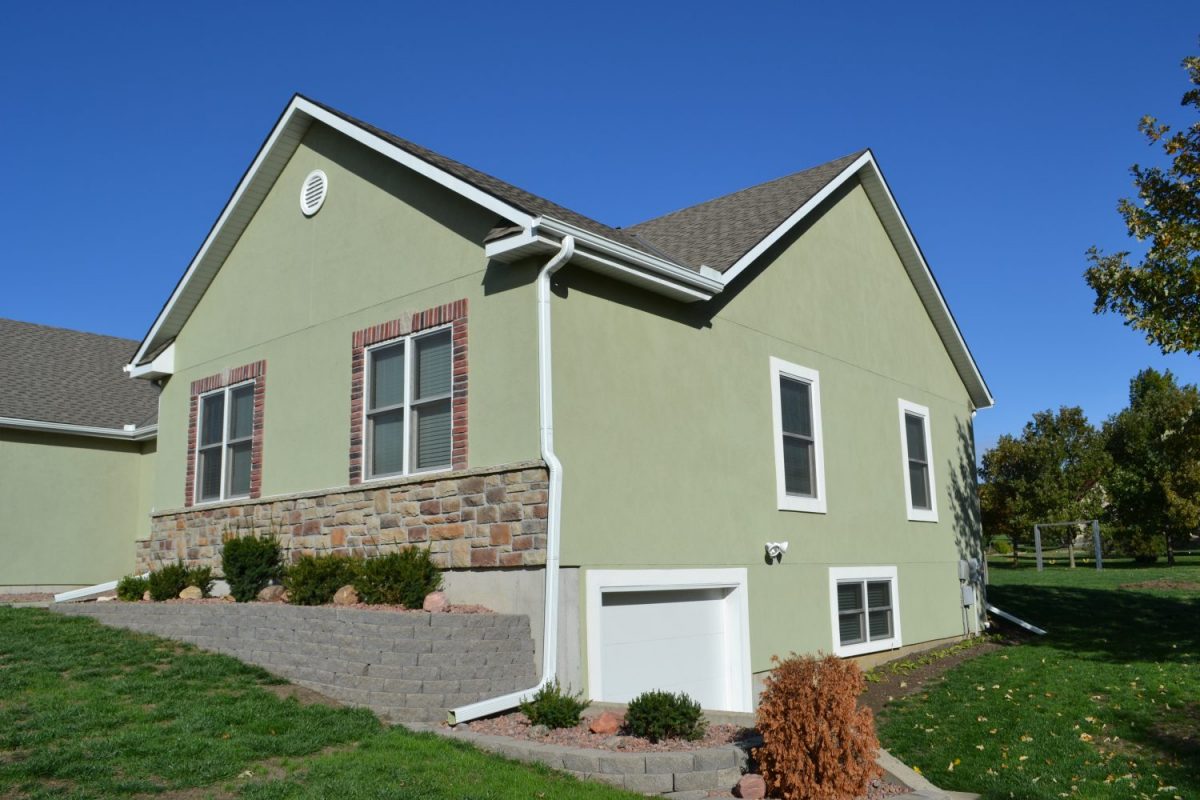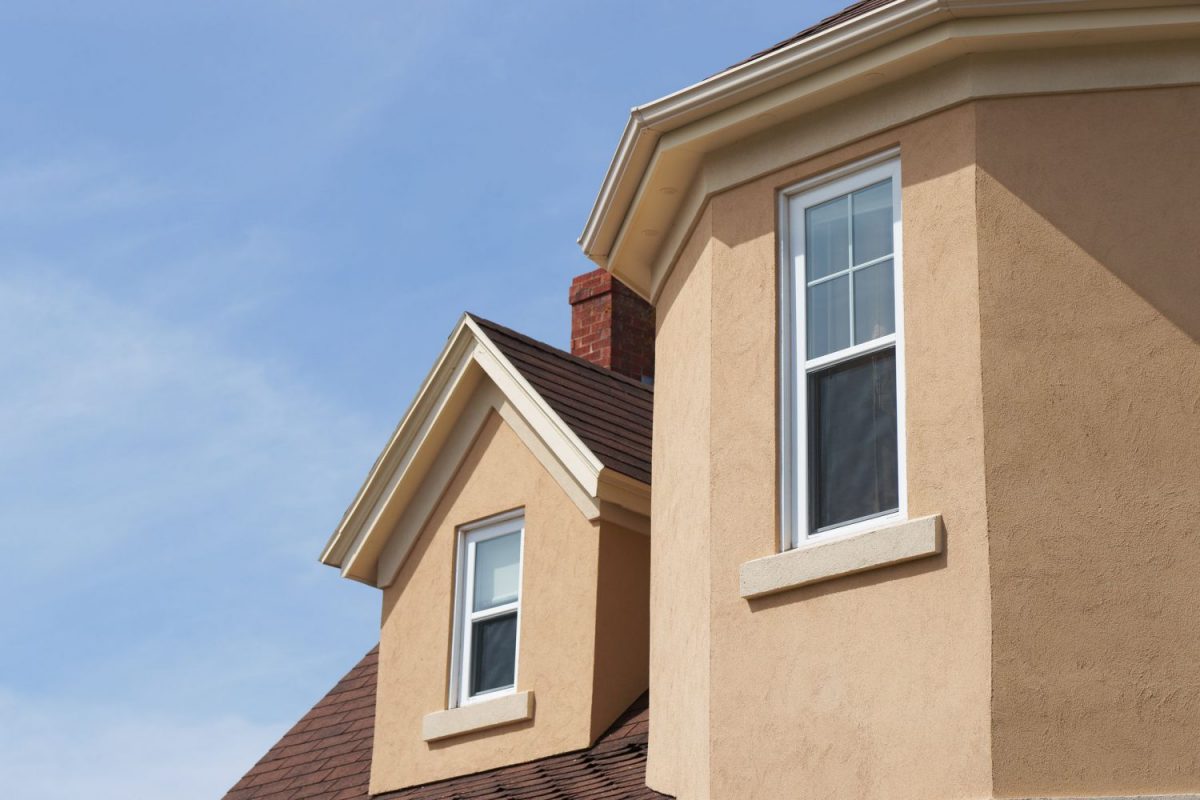
Stucco is a popular building and finishing material that is often used on homes in temperate climates. The material is usually a mixture of sand, cement, water, lime, and salt. While Stucco is trademarked in the USA, similar exterior plasters have been used for centuries in places like Spain and parts of Italy to protect buildings from the weather and keep the buildings cool inside. These days, stucco is often used in place of wood or vinyl siding, or other materials as an exterior building cover.
While typically more common as a siding material on commercial buildings, there are still a large percentage of homes sporting stucco siding also. The material is especially popular in the Southwest and Southern United States and other warmer climates, but is still popular in more Northern areas of the continent such as Calgary and Edmonton, Alberta. In any given year, a significant number of homeowners will experience some kind of stucco damage. With the weather being what it is, it is no surprise that a small crack in your stucco can suddenly become a gaping hole.
Fortunately, stucco damage is not always a disaster. It is possible to repair stucco cracks and keep the integrity of your home intact. This post will discuss how to repair cracks in stucco, whether you should patch or repair them yourself or if you should hire a professional and what factors will determine the best approach to take. Any cracks and holes need to be repaired to minimize the chance of moisture and water damage to the exterior.
Water damage could lead to stucco that continues to deteriorate over time, which can result in higher repair costs and structural damage to the building. In this article we will discuss the steps to take to patch minor cracks and small holes in your stucco siding. For larger repair, parging, and resurfacing jobs, we recommend leaving those tasks for the experienced professionals, as it can be extremely difficult to match your existing stuccos pattern and finish on your newly repaired section, as well as difficult to match the existing stuccos paint colour without having to repaint the entire wall.

1. Obtain the tools needed to complete the repair
From your tool box, or your nearest hardware store, you will need to acquire: A hammer, a cold chisel, a utility knife, a caulking gun, a stiff bristled brush or toothbrush depending on the size of the crack being repaired, a small to medium sized putty knife, and a tube of premade stucco repair caulking.
2. Cleaning and preparing the crack to be filled
To begin the repair process, you will need to clean and prepare the crack.
First, use a chisel and hammer to widen the crack to at least 1/4 inch along its length. At the same time be sure to clear away and deteriorating stucco and siding material. Make sure the edges of the crack is vertical (or slightly V shaped).
Next, scrub along the crack with an old toothbrush or stiff bristled brush to remove any dust, dirt or debris left behind from chiseling. After you’ve made sure the area is as clean as possible, you can start filling the crack.

3. Applying premade Stucco Repair Caulking
Fillers are primarily used to fill in a gap or crack. They are usually a sanded silicone, latex, or acrylic based caulk because they are weather resistant and flexible to help avoid the crack reforming in the future. Allowing it to flex and contact with changes in temperature and ground settling. They come premade by a variety of companies and are all ready to use simply by cutting off the tip of the tube using a utility knife, and applying with any regular caulking gun.
Run a bead of caulking the length of the crack, ensuring it is applied thickly enough to fill the crack in its entirety, while not excessively overflowing the sides of the crack.
The stucco repair caulking will typically begin to tack up in 20 to 40 minutes.
4. Texturing the caulk
Once the caulking has been applied the length of the crack, it is time to texture the stucco repair caulking using our putty knives. Smooth and spread the stucco repair caulking to ensure it fully covers the width of the crack and both edges, ensuring there is no open gaps along the edge for water to penetrate underneath. After this point it is up to you whether you wish to leave caulking as is to dry and set, or if you want to attempt to texture the caulking to blend a little more seamlessly.
With a bit of finesse and experimentation, you can use your smaller putty knife to add minor texturing to help match the newly filled stucco repair area with the pre existing stucco siding. It can take some work, but if you work quickly while the stucco repair caulking is still wet, you can likely complete the job with a near seamless finish. It’s best to work quickly as the longer and more set the stucco repair caulking has become, the harder it will be to reliably texture the compound.

5. Let the caulking set
After you’ve textured the caulking as desired and ensured all edges of the crack are fully filled, it’s time to clean up your tools and let the repair compound set.
Most stucco repair caulking is water soluble prior to setting, so cleaning up your putty knives with a bit of soapy water and paper towel will keep them clean and ready for the next project. If you have any caulking left over, a cap for your caulking tube will help prevent it from setting and drying inside of the tube. If you do not have a specially made cap, a nail can work in a pinch, but keep in mind it will not be as effective or keep it from setting as long.
Being able to repair minor stucco cracks and holes is essential for anyone who wants to keep their home’s exterior looking nice and prevent accelerated deterioration of their stucco siding. It may seem like a simple job, but repairing stucco can at times be a complicated endeavor. Hopefully, this article has given you some ideas about what to consider when repairing stucco. You will need the proper materials and knowledge to get the job done right. For more information regarding stucco repair and painting, be sure to visit https://legacyexteriors.ca/stucco-painting-repair-calgary/.
















